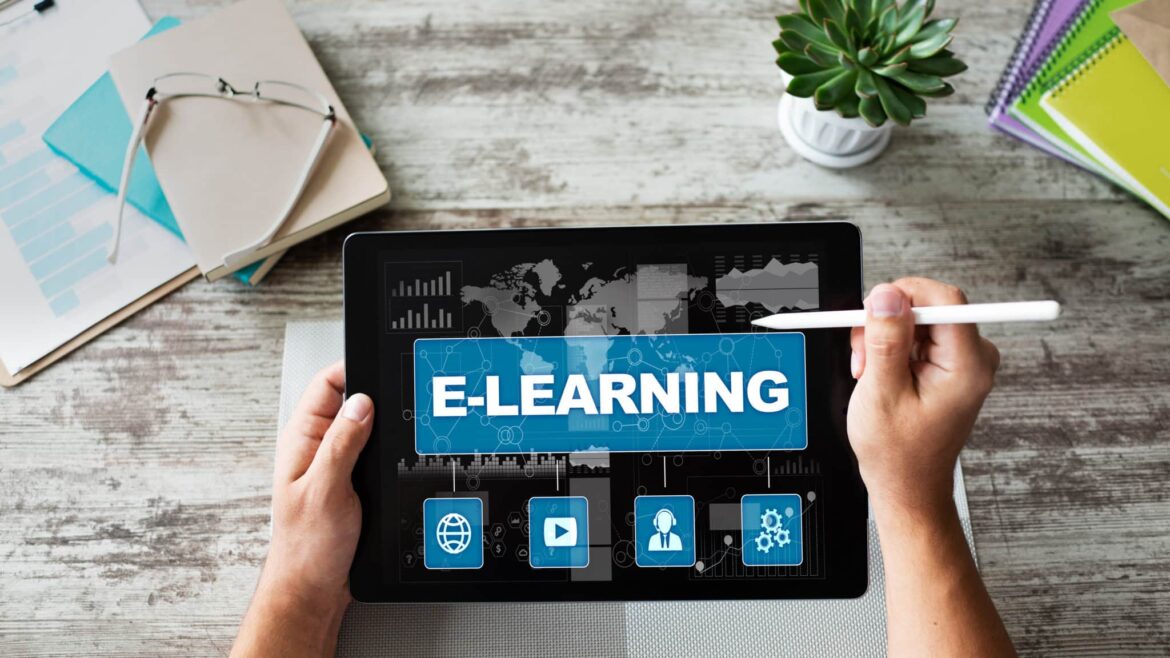E-learning is a broad term with a wide definition. This learning method is revolutionizing the way we learn. Discover how this form of learning is making education and training accessible to millions of people around the world.
Definition: What is e-learning?
E-learning has undergone rapid development in recent years and is considered one of the most innovative forms of learning. The term e-learning, short for “electronic learning,” refers to learning with the help of electronic media, especially via the Internet. It allows access to educational content anytime, anywhere, making it particularly flexible.
- The origins of e-learning can be traced back to the 1960s, when the first computer-based training programs were developed. These early programs laid the foundation for today’s diverse e-learning platforms.
- An essential part of e-learning is the use of various digital tools and platforms that provide interactive and multimedia content. These range from videos and animations to simulations and virtual classrooms.
- E-learning can be synchronous or asynchronous. Synchronous learning takes place in real time, for example in online webinars. Asynchronous learning, on the other hand, allows participants to work through the material at their own pace.
Differences between e-learning and traditional learning
E-learning differs greatly from traditional learning methods as it offers new opportunities for interaction and knowledge acquisition. In this section, we compare the two approaches and highlight the advantages of digital learning.
- Unlike traditional teaching, which requires physical presence, e-learning offers the opportunity to learn from anywhere in the world. This is particularly beneficial for people in remote areas or with limited mobility.
- Another difference lies in the flexibility of learning. Traditional educational institutions have fixed schedules, while e-learning allows learners to set their own schedules and thus better integrate learning into their everyday lives.
- Interactivity is another feature that sets e-learning apart from traditional learning. Digital platforms often offer quizzes, discussion forums, and social networks that encourage active participation and make learning more interesting.
- Although traditional learning is often seen as more personal and direct, e-learning can also create a personal connection between teachers and students through the use of video conferencing and live chats.
Advantages of e-learning
E-learning offers numerous advantages that make it an attractive option for many learners. Below, we present the most important advantages of digital learning.
- One of the biggest advantages of e-learning is the cost savings. Since no physical space is required and materials are usually available online, many of the costs associated with traditional learning are eliminated.
- E-learning allows learners to customize their learning experiences. With access to a wide range of resources, they can learn at their own pace and focus on topics that interest them most.
- Another advantage is accessibility. E-learning makes education accessible worldwide, regardless of geographical or financial constraints. This promotes equal opportunities and enables lifelong learning for all.
- With e-learning, learners can benefit from the latest technological developments, from virtual reality environments to artificial intelligence. These innovations enrich the learning experience and open up new educational pathways.
Challenges in e-learning
Despite its many advantages, there are also challenges associated with e-learning. In this section, we take a look at potential obstacles and how they can be overcome.
- One of the biggest challenges in e-learning is self-discipline. Without the structure of a traditional classroom, learners must be able to motivate themselves and organize their learning effectively.
- Technological issues can also be a barrier. Not all learners have access to high-speed internet or the necessary devices, which can make it difficult to participate in online courses.
- The quality of online content can vary. It is important that e-learning providers deliver high-quality, up-to-date materials to ensure that learning objectives are met.
- Social isolation is another aspect that needs to be considered. While e-learning offers flexibility, it often lacks the personal interaction that is provided in traditional learning. Virtual classrooms and forums can help to remedy this.

